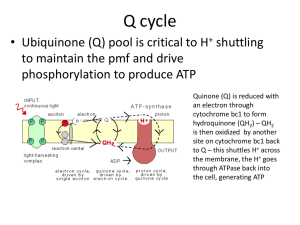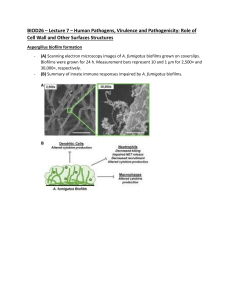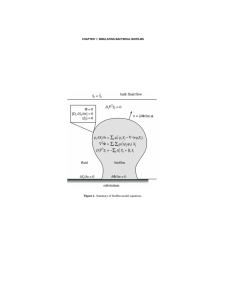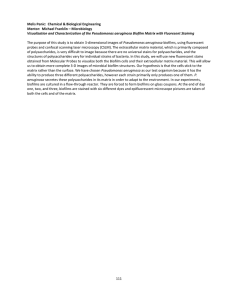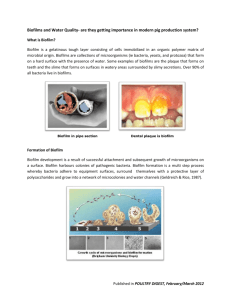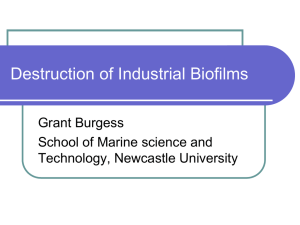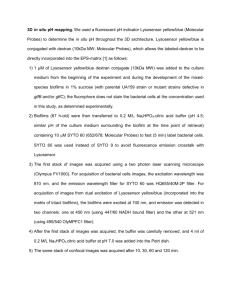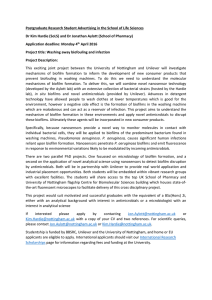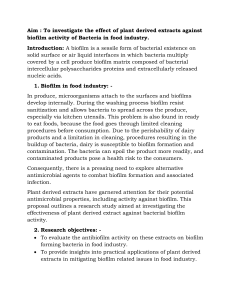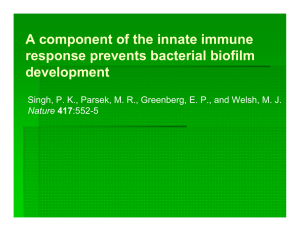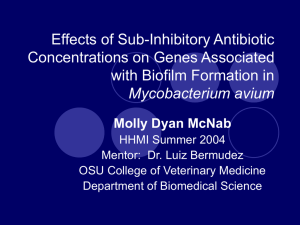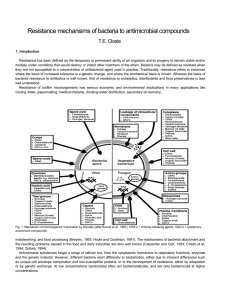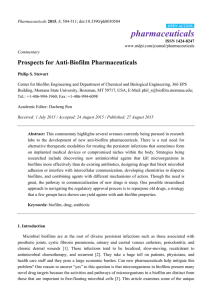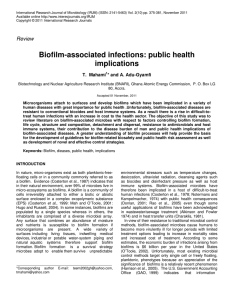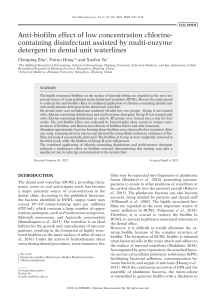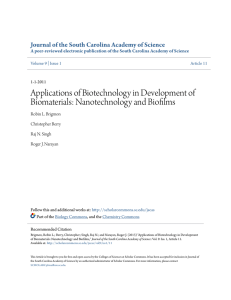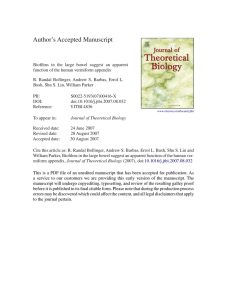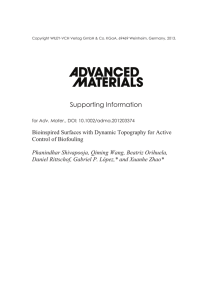T U Department of Mechanical Engineering
advertisement
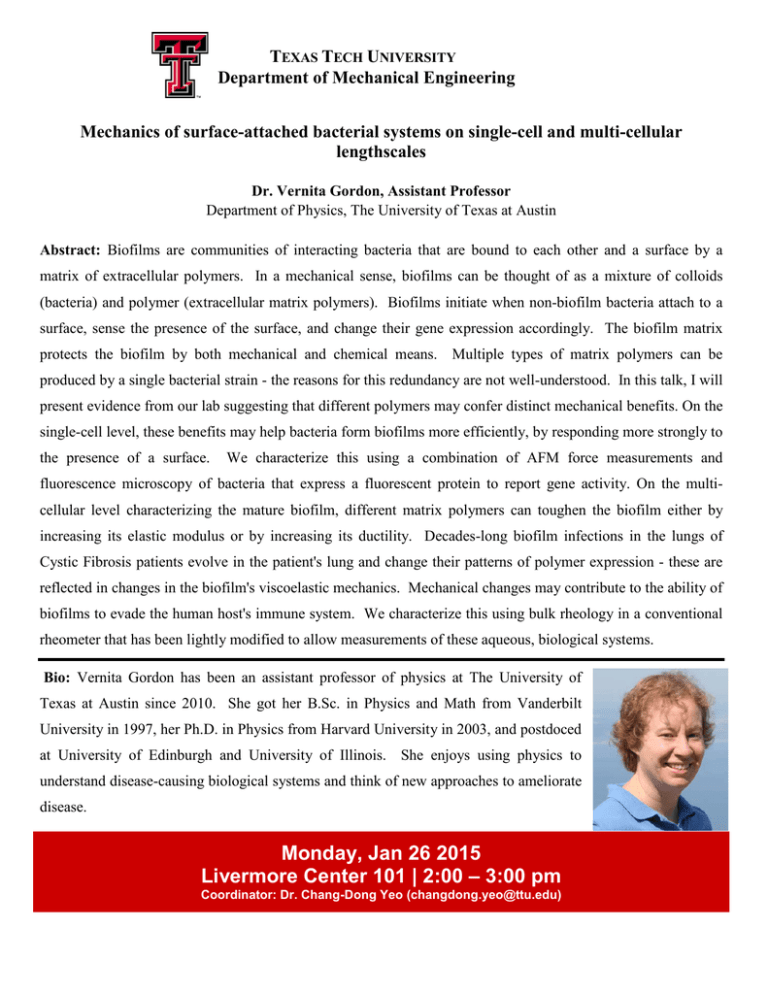
TEXAS TECH UNIVERSITY Department of Mechanical Engineering Mechanics of surface-attached bacterial systems on single-cell and multi-cellular lengthscales Dr. Vernita Gordon, Assistant Professor Department of Physics, The University of Texas at Austin Abstract: Biofilms are communities of interacting bacteria that are bound to each other and a surface by a matrix of extracellular polymers. In a mechanical sense, biofilms can be thought of as a mixture of colloids (bacteria) and polymer (extracellular matrix polymers). Biofilms initiate when non-biofilm bacteria attach to a surface, sense the presence of the surface, and change their gene expression accordingly. The biofilm matrix protects the biofilm by both mechanical and chemical means. Multiple types of matrix polymers can be produced by a single bacterial strain - the reasons for this redundancy are not well-understood. In this talk, I will present evidence from our lab suggesting that different polymers may confer distinct mechanical benefits. On the single-cell level, these benefits may help bacteria form biofilms more efficiently, by responding more strongly to the presence of a surface. We characterize this using a combination of AFM force measurements and fluorescence microscopy of bacteria that express a fluorescent protein to report gene activity. On the multicellular level characterizing the mature biofilm, different matrix polymers can toughen the biofilm either by increasing its elastic modulus or by increasing its ductility. Decades-long biofilm infections in the lungs of Cystic Fibrosis patients evolve in the patient's lung and change their patterns of polymer expression - these are reflected in changes in the biofilm's viscoelastic mechanics. Mechanical changes may contribute to the ability of biofilms to evade the human host's immune system. We characterize this using bulk rheology in a conventional rheometer that has been lightly modified to allow measurements of these aqueous, biological systems. Bio: Vernita Gordon has been an assistant professor of physics at The University of Texas at Austin since 2010. She got her B.Sc. in Physics and Math from Vanderbilt University in 1997, her Ph.D. in Physics from Harvard University in 2003, and postdoced at University of Edinburgh and University of Illinois. She enjoys using physics to understand disease-causing biological systems and think of new approaches to ameliorate disease. Monday, Jan 26 2015 Livermore Center 101 | 2:00 – 3:00 pm Coordinator: Dr. Chang-Dong Yeo (changdong.yeo@ttu.edu)
